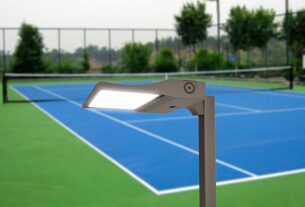
Mold Remediation Experts Provide You With the Best Preventative Tips to Keep Your Home Clean and Mold Free
Mold is a common problem in homes and businesses, but if it is not addressed quickly, it can cause serious problems. That’s why the mold remediation The Lakeshore experts provide you with the best preventative tips to help keep your home clean and mold-free!
Water damage caused by plumbing leaks, rain accumulating on roofs, and structural defects are potential sources of mold growth. If left unresolved, these issues can result in health concerns for the facility’s occupants and the deterioration of wood and insulation.
Check Your Gutters
Gutters are a crucial part of your home’s water drainage system. They channel water off the roof and away from the base of your house, protecting it from erosion and other structural damage caused by pooling water.
If your gutters become clogged, however, they won’t be able to function correctly. Instead, water will seep through your foundation into the basement or crawlspace below it.
This will cause extensive water damage, resulting in mold and mildew growth. It will also weaken the foundation and eventually crack it.
In addition, clogged gutters can allow insects and small animals like rodents to enter your home. These creatures love to take shelter in a moist place and are attracted to wet leaves that collect in the gutters.
To avoid this, always keeping your gutters free of debris is vital. This can be done by cleaning them at least twice a year. In addition, you can install gutter guards or screens to prevent larger objects from clogging the gutters.
Check Your Windows
According to mold remediation The lakeshore experts, one of the best preventative measures is checking your windows and trim. This will help you catch mold development before it becomes a significant problem.
When you do this, you can get rid of the mold safely and reduce the risk of future recurrences.
As a result, you will save money on expensive repairs later on and improve the air quality in your home.
Window sills and window casings can become havens for mold if they are not adequately wiped down after condensation. This is especially true when temperature differences exist between the inside and outside air during the winter.
If you find a lot of mold on your window casings, try cleaning them with hydrogen peroxide. This will break down the cell walls of the mold spores and kill them. This will also prevent them from spreading to other areas of your house.
Check Your Siding
Siding is designed to allow rainwater and other moisture to run off of your house’s exterior walls. However, excessive rain and continuous contact with water can increase the risk of mold forming on your siding.
In addition, mold thrives in warm, humid weather conditions. These conditions make it a prime location for mold spores to grow, so you must inspect your home’s siding and make repairs as soon as possible.
Always check for stains and signs of mildew or algae growth to avoid mold on your vinyl siding. Generally, brown or black colors on your siding indicate moisture forming under the wood.
Also, inspect your rain gutters and make necessary repairs quickly. This will prevent overflowing gutters that will drip moisture on your siding. Additionally, check any tree branches or vines hanging close to your siding. These could also be a breeding ground for mold and mildew.
Check Your Foundation
It’s essential to check your foundation regularly because issues can arise over time. In most cases, a deteriorating foundation is going to stay intact. Still, it can lead to many other serious problems that will cost you tens of thousands of dollars in repair costs.
The best way to detect foundation issues is to visually inspect your home’s foundation from top to bottom, inside and out. Watch for cracks and fissures greater than a quarter inch in size.
Another thing to watch is how water drains away from your home and basement. A foundation should slope away from your home so that rainwater and snowmelt cannot get in and cause damage.
If you notice that your roof, gutters, or large puddles are collecting liquid, consider that this could be causing the mold growth in your home. This is because outside moisture is a breeding ground for mold spores. Therefore, cleaning your roof, fixing leaky gutters, and keeping large puddles away from your foundation are vital.
Infographic created by ISI Building Products, Offering High-Performance Crawl Space Encapsulation Vapor Barrier to Enhance Appearance and Protection







